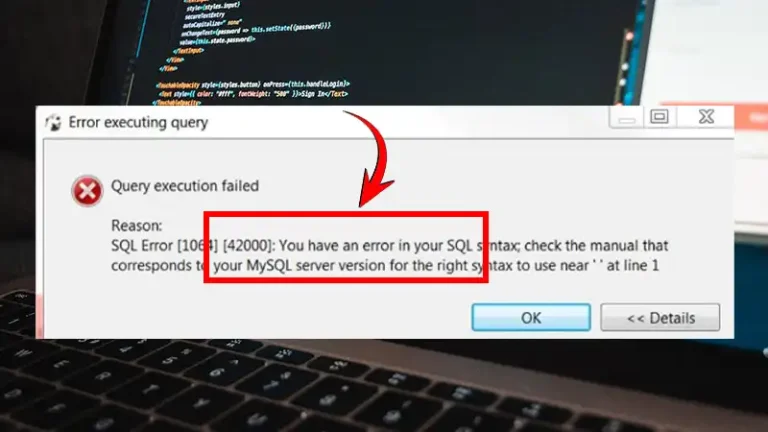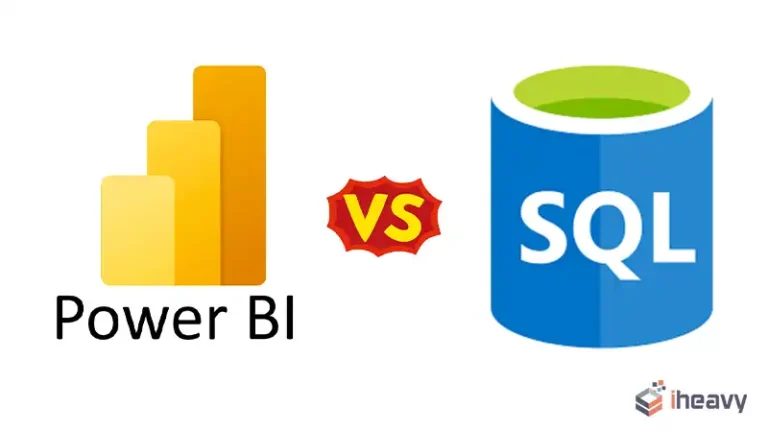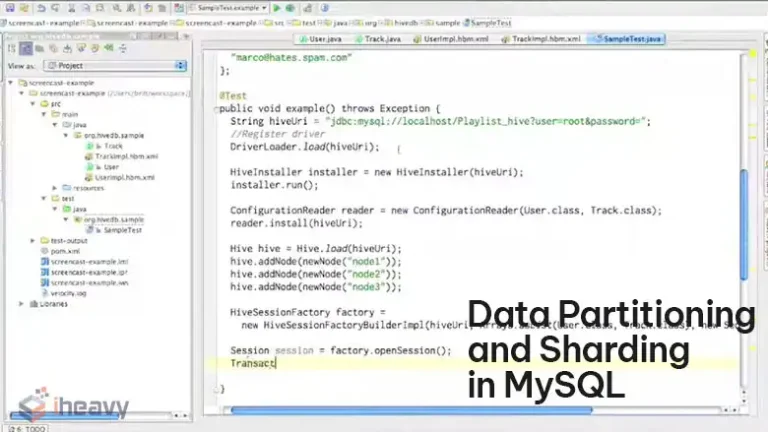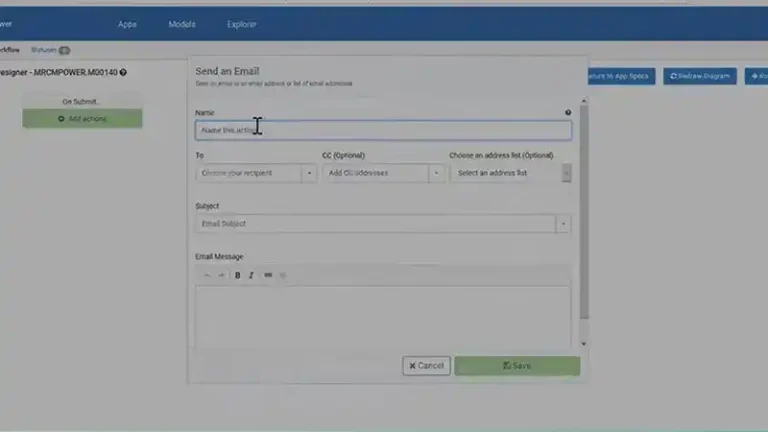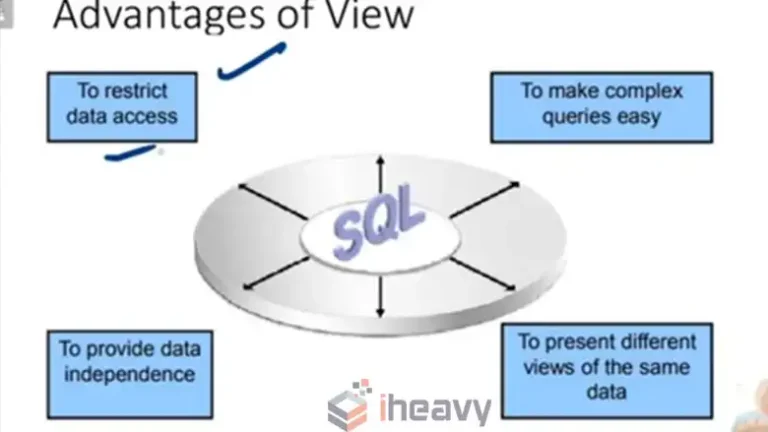Explicit Join vs Implicit Join | Comparison Guide
Joins are a crucial operation in SQL that combines data from two or more tables. SQL offers two main syntactic options for expressing joins: explicit join notation and implicit join notation.
This article will dive into the key differences between explicit and implicit join syntax, including performance, readability, flexibility, and use cases for each approach.
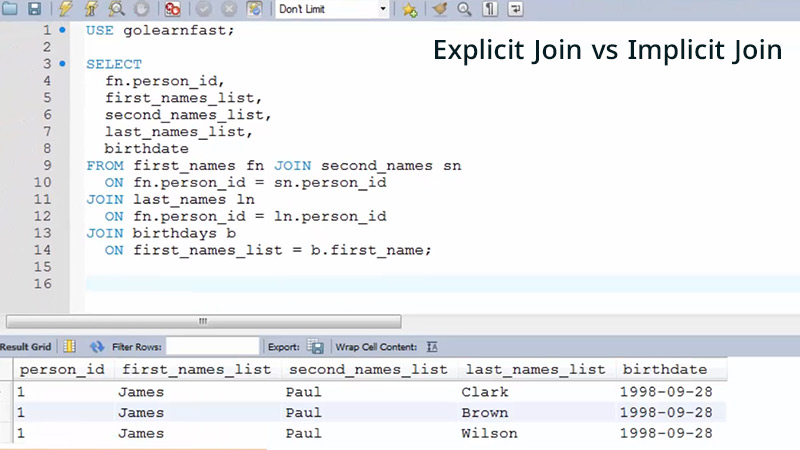
What is Explicit Join?
Explicit joins are specified explicitly in the SQL query, using the JOIN and ON keywords. Implicit joins, on the other hand, are inferred by the database based on the structure of the SQL query.
Syntax of Explicit Join
SELECT *
FROM table1
JOIN table2 ON table1.id = table2.id
Key Properties of Explicit Join Syntax
- The JOIN keyword specifies the table to join
- ON keyword defines the join condition
- Supports all join types including INNER, LEFT, RIGHT, FULL OUTER
- Join condition can reference multiple fields
- Table aliases can be used to simplify references
Explicit join syntax makes the join logic very apparent. This improves readability and avoids potential mistakes, especially for more complex joins.
Syntax of Implicit Join
Implicit join syntax relies on comma-separation and filter predicates to express joins.
SELECT *
FROM table1, table2
WHERE table1.id = table2.id
Key Properties of Implicit Join Syntax
- No JOIN keyword used
- Join condition specified in WHERE clause
- Limited to inner joins
- Join condition references single field
- More difficult to read
With implicit syntax, the join logic is harder to decipher at a glance. This can reduce understandability and maintainability.
Key Differences Between Explicit and Implicit Joins
Explicit and implicit joins differ in several key areas:
| Characteristic | Explicit joins | Implicit joins |
| Syntax | Specified explicitly using the JOIN keyword | Inferred by the database. Uses WHRER keyword |
| Performance | Generally faster | Generally slower |
| Readability | More readable and easier to debug | Less readable and more difficult to debug |
| Flexibility | More flexible and can be used to implement a wider range of join types | Less flexible and limited to a smaller subset of join types |
| Maintainability | JOIN logic is easier to modify | Not easy to modify |
In most cases, explicit join syntax is preferable over implicit syntax because of these advantages.
Use Cases for Explicit Joins and Implicit Joins
Typical use cases for each join syntax include:
Explicit Joins
- Complex queries with multiple joins
- Queries requiring outer joins
- Dynamic join logic based on variables
- Queries where performance is critical
Implicit Joins
- Simple inner join queries on single fields
- Queries involving only two tables
- Legacy systems where implicit style is prevalent
Performance Comparison
Mathematically, the performance of each join syntax can be modeled as:
Explicit join:
Time = parsing + optimization + execution
Implicit join:
Time = parsing + cross-join optimization + rewrite + final optimization + execution
The extra steps involved in optimizing and rewriting implicit joins typically result in slower performance relative to explicit joins optimized directly into the desired form.
JOIN vs WHERE Clause Performance
An additional performance consideration is to JOIN predicates specified in ON clauses vs WHERE clauses. ON clause predicates can be optimized earlier than WHERE clause filters. This often results in better performance when JOIN conditions are specified in ON rather than WHERE.
Best Practices for Implementing Explicit Joins and Implicit Joins
Here are some best practices for implementing explicit joins and implicit joins:
Explicit Joins
- Use descriptive table and column names in your SQL queries.
- Use the JOIN keyword to explicitly specify the join type.
- Use the ON clause to specify the join condition.
- Use aliases to avoid name conflicts.
- Use parentheses to group join clauses.
Implicit Joins
- Use descriptive table and column names in your SQL queries.
- Avoid using implicit joins in complex SQL queries.
- Use explicit joins instead of implicit joins when the join logic needs to be explicitly specified.
FAQs – Frequently Asked Questions and Answers
- How can I optimize join performance in SQL queries?
Answer: Tactics like selecting efficient join types, specifying join conditions in ON clauses, adding indexes, and analyzing execution plans help optimize SQL join performance.
- When is it better to use implicit vs explicit join syntax?
Answer: Explicit join syntax is preferable in most cases, except potentially very simple queries on just two tables where implicit style improves brevity.
- What is the difference between INNER and OUTER joins?
Answer: An INNER JOIN returns only matching rows from both tables, while OUTER JOINS returns all rows from one table plus matched rows from the other table.
To Conclude
Explicit join syntax clearly conveys relational concepts and offers flexibility, performance, and maintainability advantages over implicit joins in most cases. The expressiveness and optimizations provided by explicit joins make this syntax the preferred way to connect SQL tables in modern applications.


